Find the accelerations of rod A and wedge B in the arrangement shown in figure if the ratio of the mass of the wedge to that of the rod equals η, and the friction between all contact surfaces is negligible.
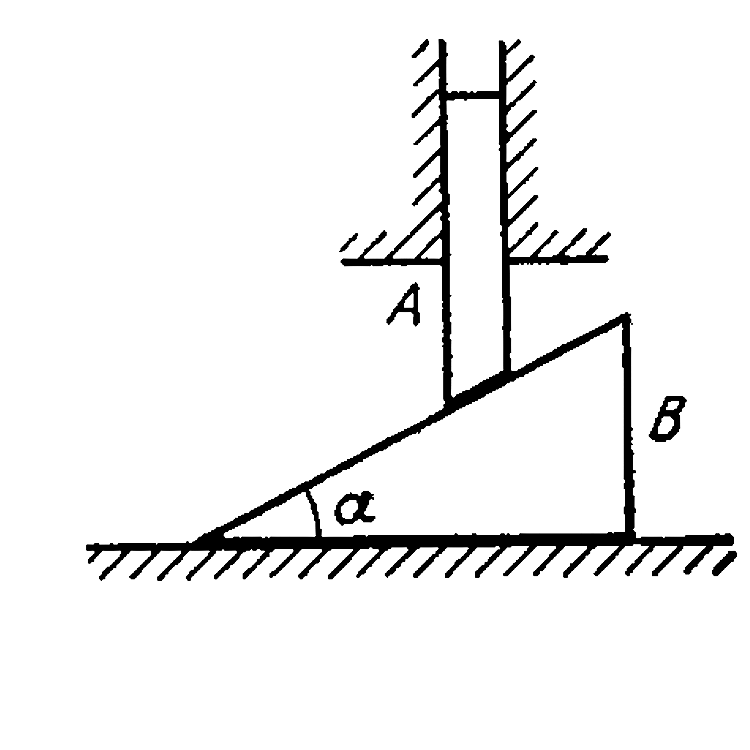
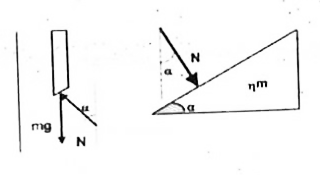
y=xtanα⇒d2ydt2=d2xdt2tanα
arod=awedge.tanα (constraint equation)
mg−Ncosα=maR &Nsinα=(ηm).awedge
⇒mg−Ncosα=mawtanα
Solving we get,
awedge=gtanα+ηcotαandaRod=g1+ηcot2α
Similar Questions
A rod of mass m is supported on a wedge of mass M shown in fig. Find the accelerations of rod and wedge in the arrangement. The friction between all contact surfaces in negligible.
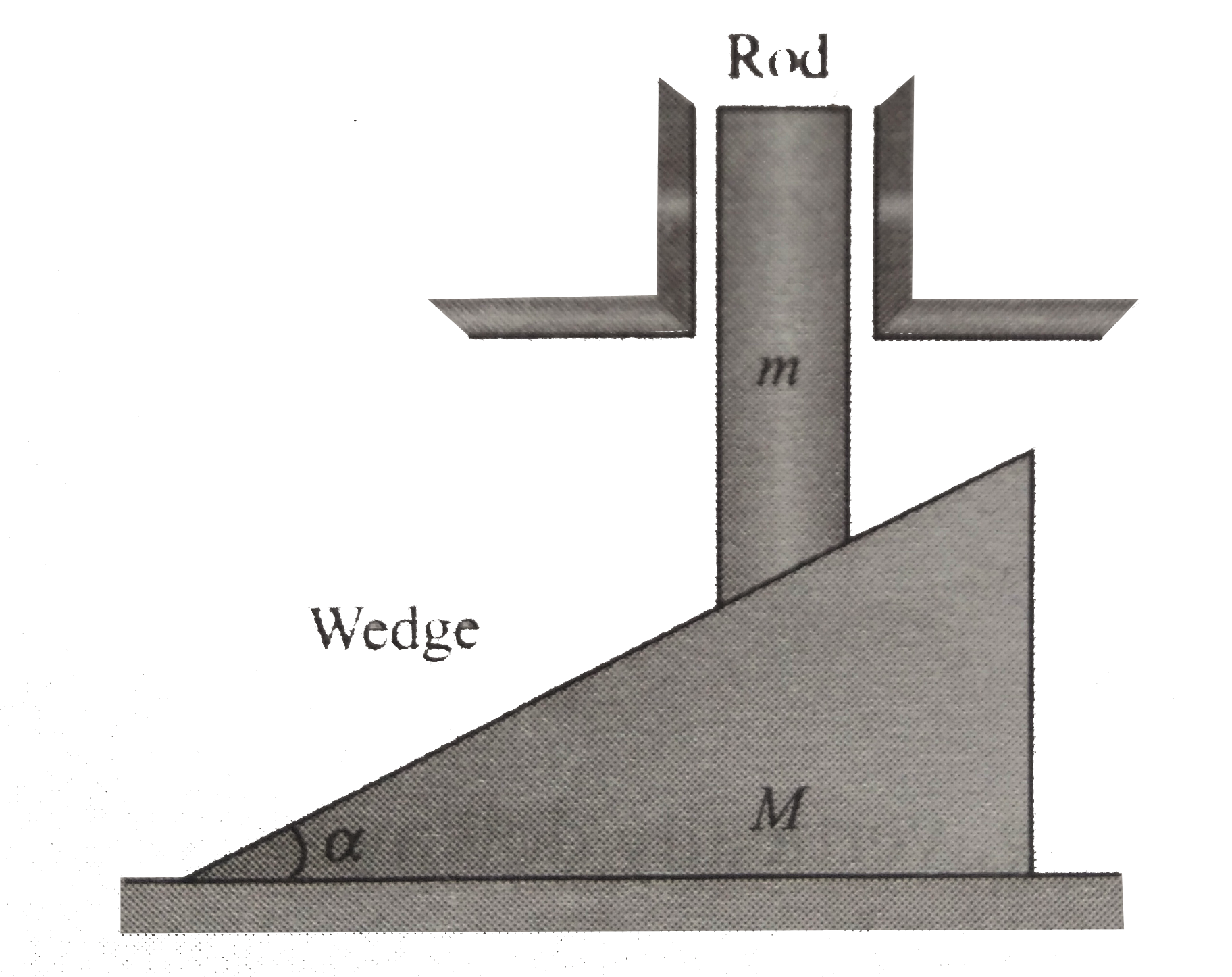 View Solution
View SolutionFind the acceleration of the body of mass m2 in the arrangement shown in figure. If the massm2 is η time the mass m1 and the angle that the inclined plane forms with the horizontal is equal to θ. The masses of the pulley and threads, as well as the friction, are assumed to be negligible.
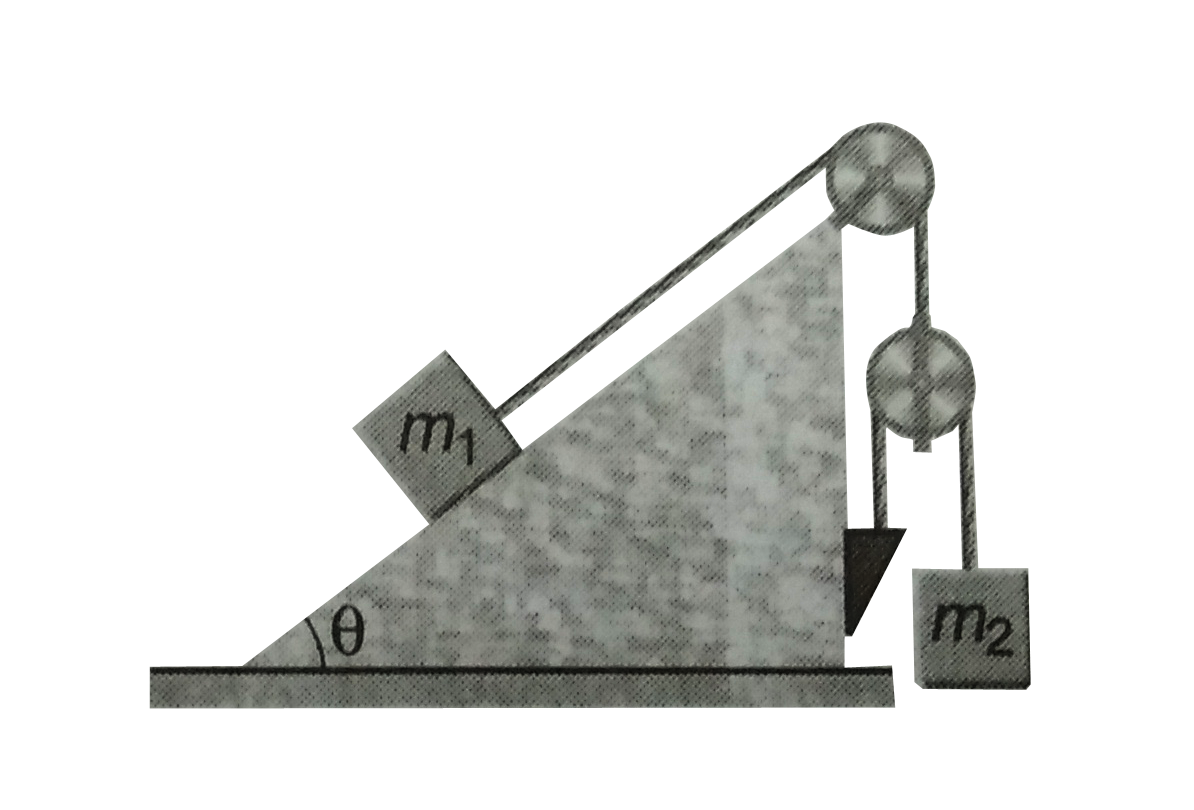 View Solution
View SolutionIn the arrangement shown in fig. the block of mass m=2kg lies on the wedge of mass M=8kg. The initial acceleration of the wedge, if the surfaces are smooth, is
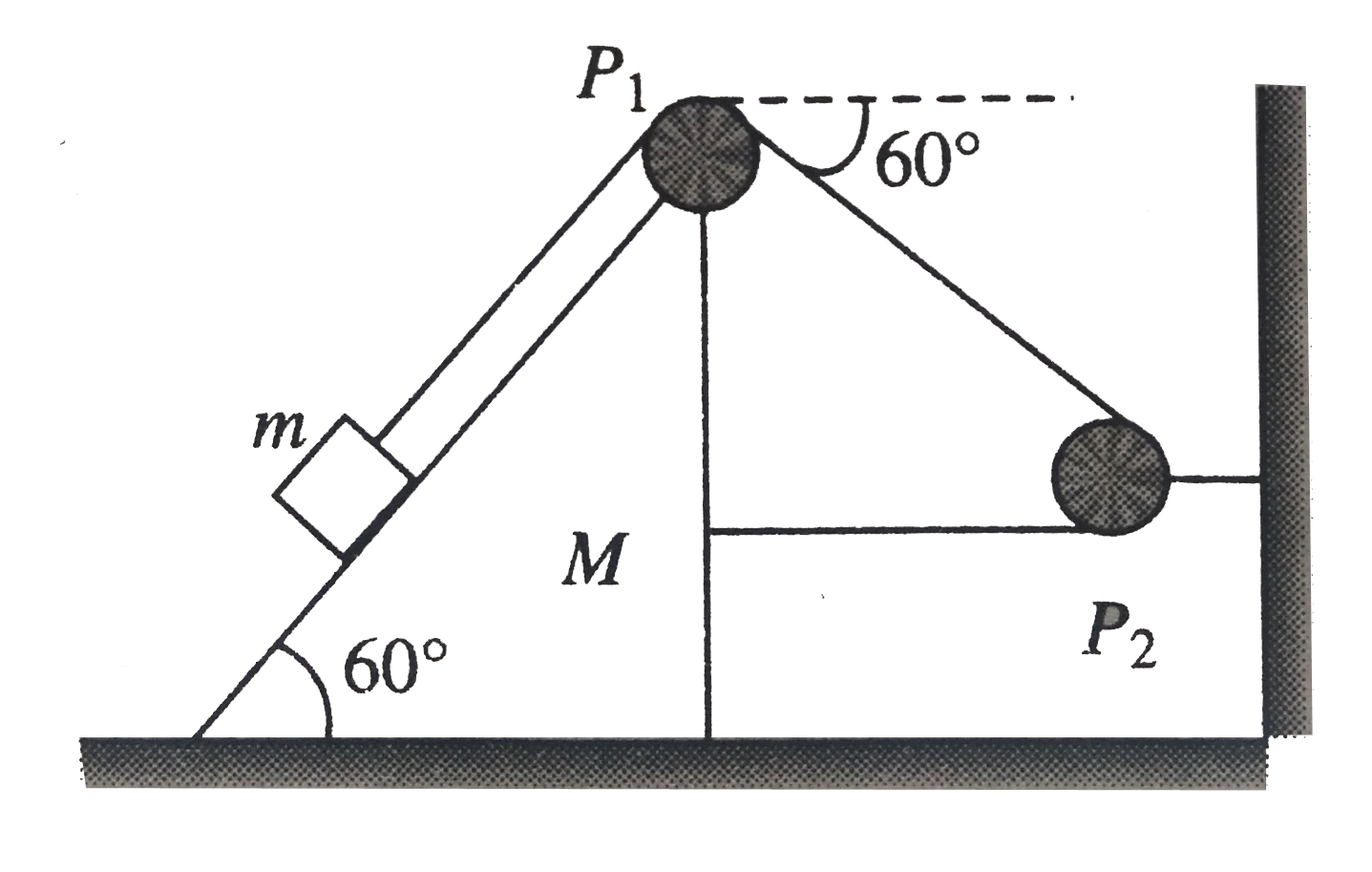 View Solution
View SolutionAll the surfaces are smooth as shown in figure. The acceleration of mass m relative to wedge is :
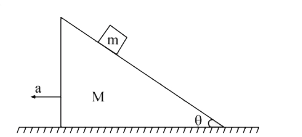 View Solution
View SolutionA plank of mass m rests symmetrically on two wedges B and C of mass M. What is the acceleration of the plank? Neglect friction between all the contact surfaces.
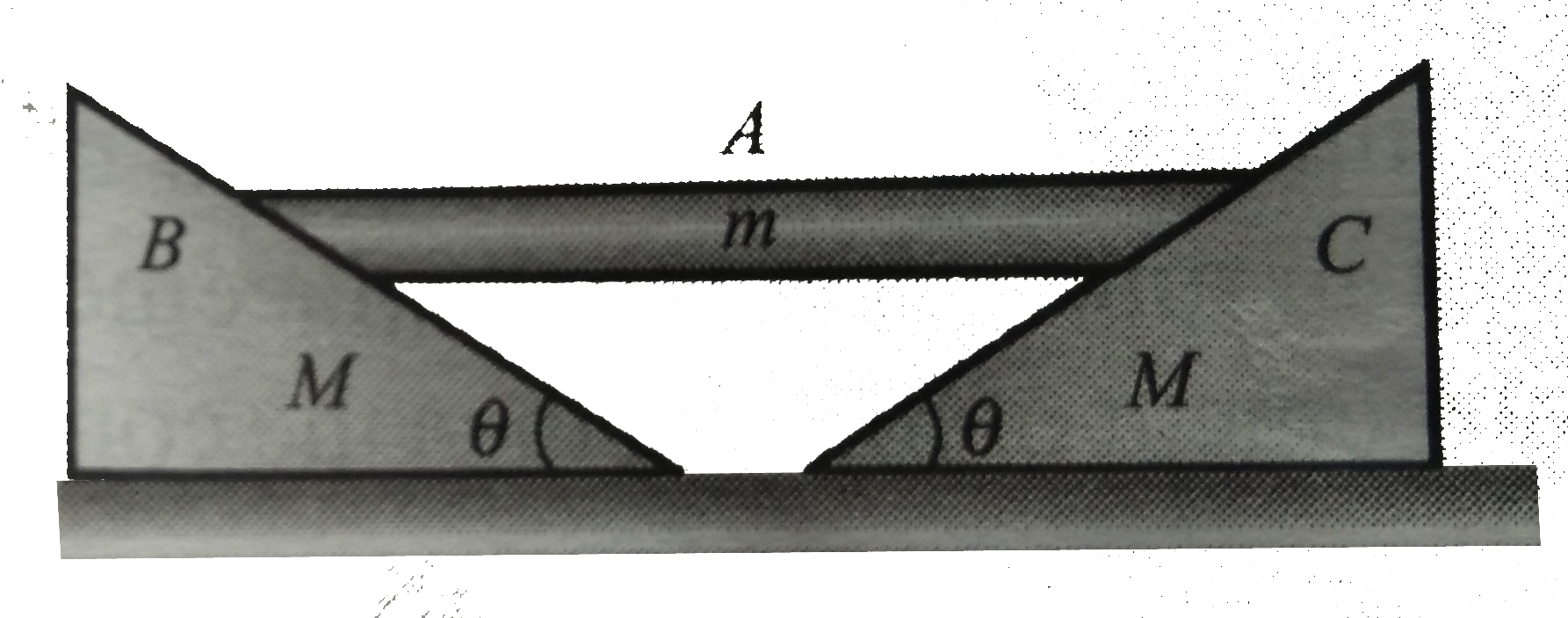 View Solution
View SolutionA block of weight W is placed on a wedge and arranged as shown in fig. find the force F needed to hold the cart equilibrium if there is no friction.
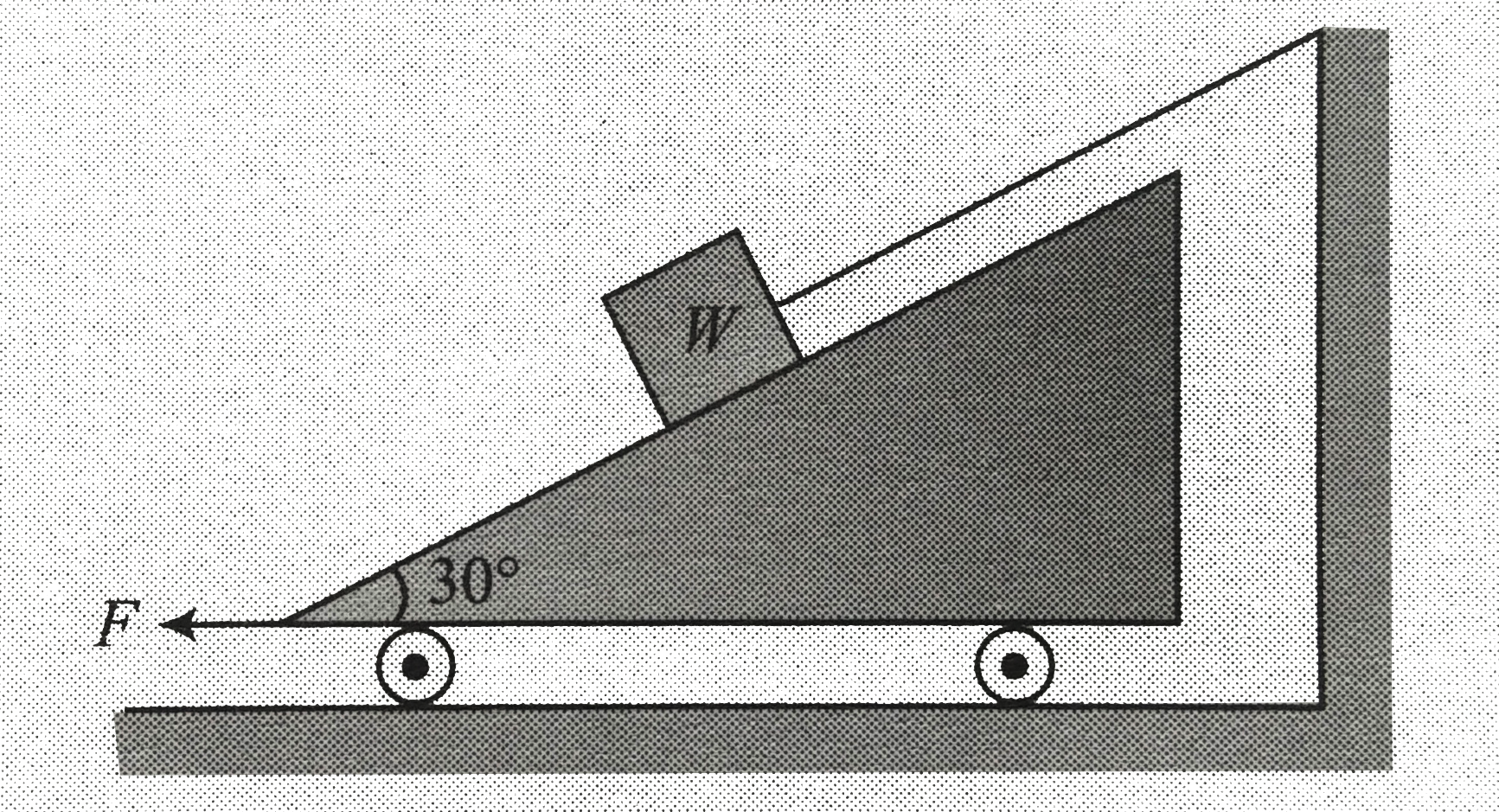 View Solution
View SolutionFor no friction to act on a block kept on an accelerating wedge as shown in figure, acceleration a of the wedge should be -
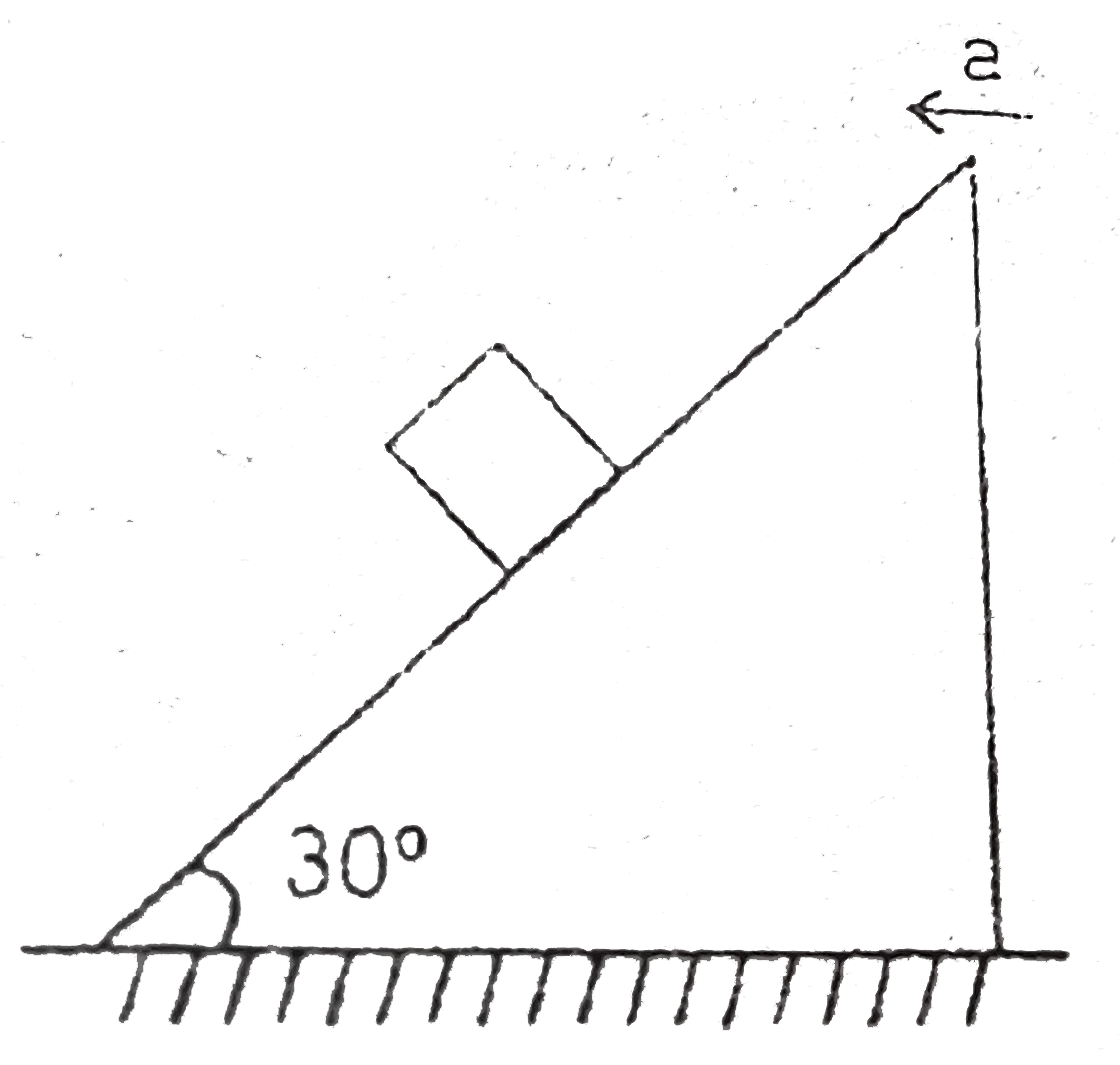 View Solution
View SolutionIn the arrangement shown in figure the mass of the ball is η times as that of the rod. The length of the rod is L the masses of the pulleys and the threads as well as the friction, are negligible. The ball is set on the same level as the lower end of the rod and then released. How soon will the ball be opposite the upper end of the rod?
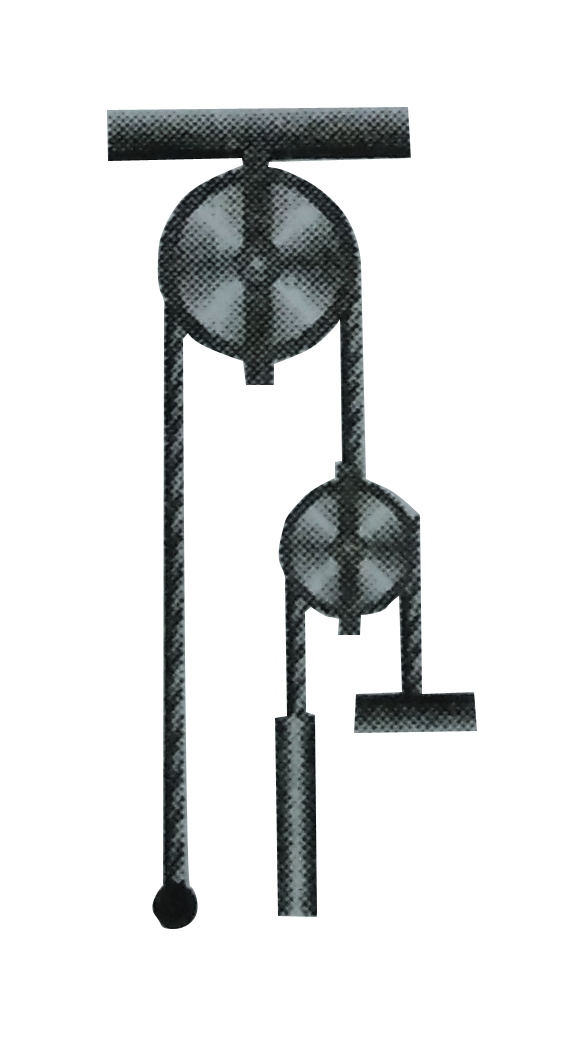 View Solution
View SolutionA block on table shown in figure is just on the wedge of slipping. Find the coefficient of static friction between the block and table top.
 View Solution
View SolutionA block of mass m is released from a wedge of mass m as shown in figure . Find the time taken by the block to reach the end of the wedge.
 View Solution
View Solution

